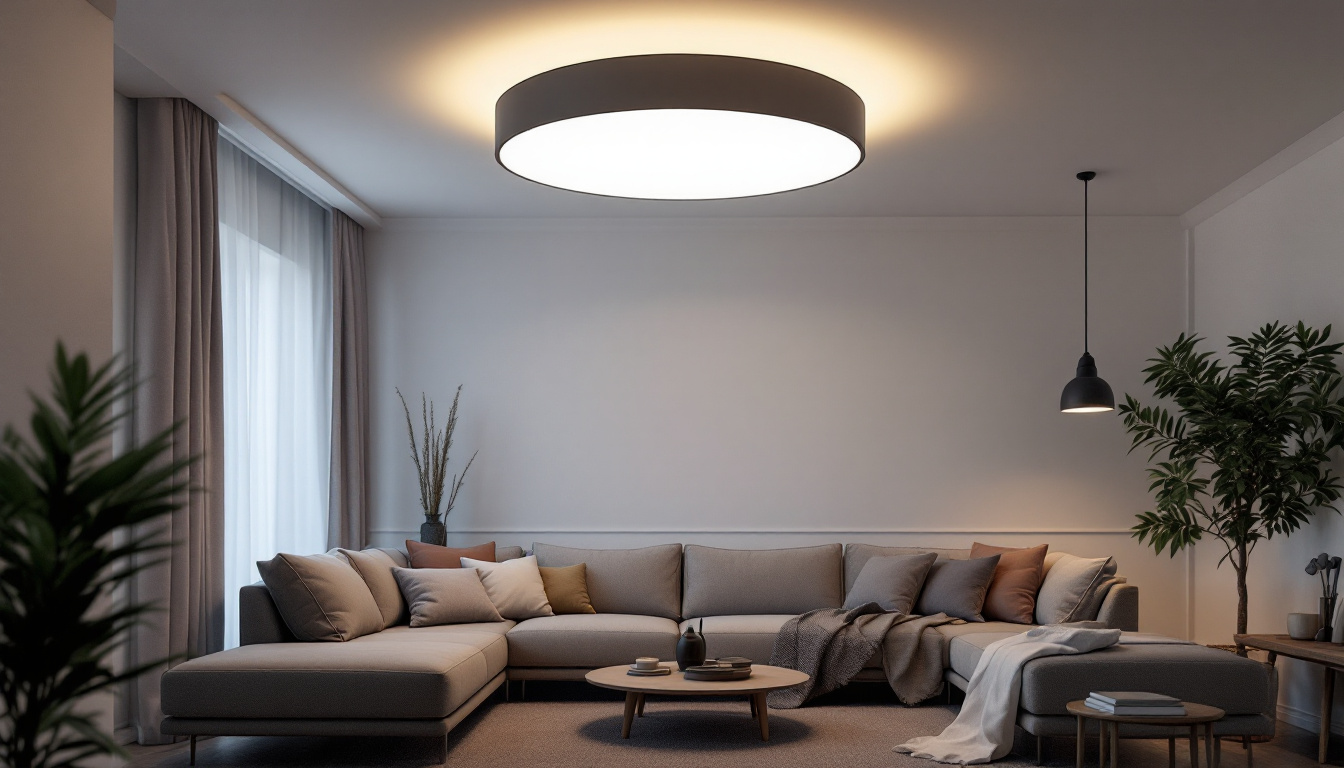
In the world of lighting design, LED lights have revolutionized the way spaces are illuminated. Their versatility, energy efficiency, and longevity make them a popular choice among lighting contractors. However, one of the most critical aspects of LED lighting that often requires careful consideration is color. The color of LED lights can significantly impact the ambiance, functionality, and overall aesthetic of a space. This article delves into best practices for selecting LED light colors, tailored specifically for lighting contractors.
Color temperature is a crucial factor in determining the mood and functionality of a space. Measured in Kelvin (K), color temperature describes the appearance of the light emitted by a bulb. Generally, lower Kelvin values indicate warmer colors, while higher values signify cooler tones. This concept not only influences the aesthetic of a room but also affects how we perceive colors and shapes, impacting everything from interior design to photography.
Warm white LED lights, typically ranging from 2700K to 3000K, create a cozy and inviting atmosphere. These tones are ideal for residential spaces, such as living rooms and bedrooms, where comfort is paramount. The warm glow of these lights can enhance the feeling of relaxation, making them perfect for unwinding after a long day. On the other hand, cool white lights, ranging from 4000K to 5000K, emit a brighter, more energetic light, making them suitable for workspaces, kitchens, and bathrooms. These cooler tones can help improve focus and productivity, providing the clarity needed for tasks that require precision and attention to detail.
Daylight LEDs, with a color temperature of around 5000K to 6500K, mimic natural sunlight. These lights are particularly beneficial in environments where color accuracy is essential, such as art studios or retail spaces. The ability to replicate daylight can enhance the visual appeal of products and artwork, allowing colors to appear more vibrant and true to life. When selecting daylight LEDs, contractors should consider the specific needs of the space and the activities that will take place there. For instance, in a workspace where creativity is key, maximizing natural light can foster inspiration and innovation. Additionally, daylight LEDs can help regulate circadian rhythms, promoting better sleep patterns when used thoughtfully in residential settings, ensuring that the right balance of light is achieved throughout the day.
Color Rendering Index (CRI) is another vital aspect to consider when choosing LED lights. CRI measures how accurately a light source displays colors in comparison to natural light. A higher CRI value, typically above 80, indicates better color accuracy, which is crucial in settings where color differentiation is important.
In commercial settings, such as showrooms or galleries, a high CRI can enhance the visual appeal of products and artworks. For instance, lighting contractors working in a fashion retail environment should prioritize LEDs with a CRI of 90 or above to ensure that clothing colors are represented accurately. Conversely, in areas where color is less critical, such as warehouses, a lower CRI may be acceptable. Additionally, environments like restaurants and cafes can benefit from high CRI lighting as it not only enhances the presentation of food but also creates a warm and inviting atmosphere that encourages customers to linger longer and enjoy their dining experience.
While high CRI values are desirable, contractors must also balance this with energy efficiency. Some high-CRI LEDs may consume more power, which could lead to increased operational costs. Therefore, assessing the specific requirements of the project and finding a suitable compromise between CRI and efficiency is essential. Moreover, advancements in LED technology have led to the development of energy-efficient high-CRI options that provide excellent color rendering without significantly increasing energy consumption. This innovation allows businesses to maintain aesthetic quality while also adhering to sustainability goals, making it easier to create visually stunning spaces without compromising on environmental responsibility.
The choice of LED light color can dramatically influence the atmosphere of various environments. Understanding the intended use of a space is crucial for lighting contractors when making these decisions.
In residential settings, warm white LEDs are often favored for their comforting qualities. They create a relaxing environment, making them perfect for living rooms, bedrooms, and dining areas. However, in areas like home offices or kitchens, a cooler white light may be more appropriate to enhance focus and visibility.
In commercial environments, the choice of LED color can affect customer experience and productivity. Retail spaces benefit from a combination of warm and cool lighting to highlight products while maintaining an inviting atmosphere. Offices, on the other hand, should prioritize cooler tones to promote alertness and concentration.
For outdoor lighting, the color of LEDs can enhance safety and aesthetics. Warm white lights can create a welcoming ambiance for patios and gardens, while cooler lights may be more suitable for security purposes, illuminating pathways and entrances effectively. Additionally, contractors should consider the surrounding environment and how the chosen color will interact with natural elements.
Accent lighting is an effective way to highlight specific features within a space. LED lights can be used to draw attention to artwork, architectural details, or landscaping. The color of the accent lighting plays a crucial role in achieving the desired effect.
When illuminating artwork, it’s essential to choose LED lights with a high CRI to ensure that colors are rendered accurately. Additionally, the color temperature should complement the artwork itself. For example, warm white lights can enhance the richness of oil paintings, while cooler lights may be better suited for modern art with vibrant colors.
Accent lighting allows for creative expression through color. By using colored LED lights, contractors can evoke specific emotions or themes within a space. For instance, blue tones can create a calming effect, while red tones may evoke energy and passion. Understanding the psychological effects of color can help contractors make informed decisions that align with the overall design intent.
The rise of smart lighting technology has introduced new possibilities for color selection and control. With smart LED systems, contractors can offer clients the ability to adjust the color and intensity of their lighting based on their needs and preferences.
Smart LED systems provide flexibility and customization, allowing users to change the color temperature and brightness with ease. This adaptability can enhance the functionality of a space, making it suitable for various activities, from hosting gatherings to focusing on work tasks. Moreover, the ability to program lighting schedules can lead to energy savings and increased convenience.
For contractors working on residential projects, integrating smart LED lighting with home automation systems can elevate the overall experience for homeowners. By allowing users to control their lighting through voice commands or mobile apps, contractors can enhance the appeal of their installations and provide added value to their clients.
When selecting LED lights, contractors must also be aware of compliance and safety regulations. Ensuring that the chosen products meet local codes and standards is essential for both legal and safety reasons.
Many regions have implemented energy efficiency regulations that dictate the minimum performance standards for lighting products. Contractors should familiarize themselves with these regulations to ensure compliance and avoid potential penalties. Additionally, promoting energy-efficient LED solutions can enhance the contractor’s reputation as a responsible and knowledgeable professional.
Safety is paramount in any lighting installation. Contractors should verify that the LED products they choose comply with safety standards, including certifications from recognized organizations. This diligence not only protects the contractor but also ensures the safety and satisfaction of the client.
The lighting industry is continually evolving, with new trends emerging regularly. Staying informed about the latest developments in LED lighting colors can help contractors remain competitive and meet client expectations.
Human-centric lighting focuses on the impact of light on human health and well-being. This trend emphasizes the importance of color temperature and intensity in relation to circadian rhythms. By incorporating adjustable LED lights that mimic natural daylight patterns, contractors can create environments that promote comfort and productivity.
Color changing LEDs have gained popularity for their versatility. These lights allow users to switch between different colors and color temperatures, catering to various moods and activities. Contractors can leverage this trend by offering clients customizable lighting solutions that enhance their spaces.
In summary, the color of LED lights plays a pivotal role in shaping the ambiance and functionality of spaces. For lighting contractors, understanding the nuances of color temperature, CRI, and the specific needs of different environments is essential for delivering successful lighting solutions. By keeping abreast of trends and best practices, contractors can enhance their expertise and provide exceptional service to their clients.
Ultimately, the right choice of LED light color can transform a space, making it more inviting, functional, and visually appealing. By considering the various factors outlined in this article, lighting contractors can ensure that their installations not only meet but exceed client expectations.
Ready to elevate your lighting installations with the perfect LED solutions? At LumenWholesale, we provide lighting contractors with the highest quality, spec-grade LED products at exceptional wholesale prices. Say goodbye to local distributor markups and hello to a vast selection of reliable lighting that meets rigorous industry standards. With our commitment to affordability and convenience, you’ll enjoy free shipping on bulk orders, ensuring you get the best value without any hidden costs. Transform your projects with the ideal blend of quality, efficiency, and cost-effectiveness. Discover wholesale lighting at the best value today and light up your spaces like never before.

Discover innovative hacks for smart lighting contractors to elevate their projects with large flush mount ceiling lights.

Discover how in-ground solar lights are revolutionizing the lighting industry and impacting contractors’ profitability.

Discover how commercial LED lighting is revolutionizing projects for lighting contractors.

Discover how sourcing lighting products wholesale can give lighting contractors a competitive edge in bidding.